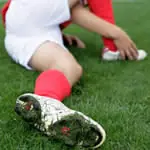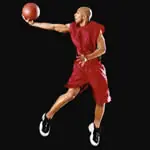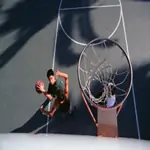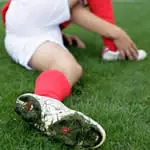Proper footwork is the foundation of the game of basketball. Building a skill-set of solid footwork techniques can ensure the proper development of 12-year-old youth players and high school players.
Some footwork techniques included here are time-tested basic fundamentals. Others may be completely unfamiliar, but are widely used in other sports and are applicable to basketball.
Basketball Events Near You
Spring High School Co-ed Basketball Team
Spooky Nook Sports Ohio • Hamilton, OH
Basketball
Class of 2026
Coach Woottens Basketball Camp • Hamilton, OH
Basketball
Class of 2029
Coach Woottens Basketball Camp • Hamilton, OH
Basketball
Proper footwork can enhance any player's ability to play offense, defense, rebound or any other part of the game of basketball. This article is not meant to be the absolute authority on footwork, but hopefully it will serve to inspire both coaches and players to focus more on footwork. If there are terms and descriptions that are unfamiliar, please refer to the demonstration photos and videos at 1on1Basketball.net.
The following are 10 important aspects of footwork that I have used in coaching major college and pro players:
Ready Position
You can't score unless you make shots. A quick surefire way to improve your shot is to simply have your feet and hands ready to catch and shoot even before the ball is passed. To play defense properly, most coaches and players understand that you must start with a ready position that allows the defender to move in any direction, including jumping up to block a shot or standing still to take a charge. The basic ready positions for both offense and defense in basketball are essentially the same. This is the most basic and necessary athletic stance for success in most sports, including basketball.
Heels Up -- Coaches in every sport often teach players to "get low" and "stand on the ball of the foot" or "on your toes." These phrases are simply metaphors to more easily explain how to perform this technique. When done correctly, it is actually the area of the foot directly behind and across all of the toes, which includes the ball of the foot, that will bear and support the weight of the body. Raising the heels off the floor automatically causes the legs to bend, making it easier and more natural to lower the body into a slight squat that provides balance, power and enhances propulsion. This bio-mechanically correct contact point of the foot, combined with a low center of gravity, is the optimum position for basketball players to start any movement. Players will then find it easier to sprint, jump, slide, stop, pivot and hold their position.
Wide Base -- Maintain a wide stance with both feet about shoulder-width apart. A shoulder-width stance is sufficient enough to increase the ability to quickly move forward, backward, or shoot jump shots and free throws. To increase the ability to move laterally, separate the feet even more than shoulder-width. Establishing post position requires an extremely wide stance.
Jump-Steps
As a former 100-meter sprinter, I know the value and technique of the proverbial quick first step. Sprinters are trained to explode out of the blocks, pushing off with one leg while bringing the opposite knee up toward the chest. Sprinters emphasize not just the speed of the first step, but also how much ground is covered by the step.
To modify this technique for basketball, start from a low ready-position stance, practice jumping as far and fast as you can off one foot at a time, then land on the other foot while regaining and maintaining balance. This should generate movement towards your desired direction, not upward movement.
The best players can do this moving forward, laterally or even backwards. Develop the ability to do this off both feet. The best players in the game utilize this technique to move or change direction forward, backwards or laterally with explosive results.
Speed is a combination of physical strength and coordination. Quickness is that combination, plus the mental focus to anticipate and be prepared to move when and where you need to, in order to be successful. Both stem from jump steps. Examples of how this is utilized in actual game play include driving to the basket, moving into 1-2 step footwork on jumpshots, and the first step of defensive slides.
Sprinting
Most people assume that we all know how to run. No, we don't. Even world-class sprinters work constantly on their technique, and so should basketball players. After the initial jump-step mentioned above, learn to lift the opposite leg and the knee high up toward the chest, while also making sure to alternately and aggressively pump the arms.
The fastest sprinters in track often measure both the speed of their first two steps, as well as how far they go with each step. In a practical example, to truly run a fast break, it's important to actually run fast in a sprint. The benefit of maximizing the ability to reach and maintain top sprint speed in basketball games is evident on both offense and defense. Therefore, it makes sense for players to learn to sprint properly.
To really improve speed, get quality coaching. While speed and conditioning coaches are currently very popular, seeking help from an experienced local track coach could prove to be more effective and less expensive.
Two-Foot Jump Stop
Like the ready position, this is one of the most basic yet useful types of footwork. The jump stop is essentially a technique used to transition from moving (even quickly) in any direction, into stopping and reestablishing the ready position described above. To execute the jump stop, simply get both feet airborne, land with both feet touching the floor simultaneously and immediately drop into a ready position stance to help regain balance.
There is no need to jump up or jump high. In fact, the lower you remain to the ground the quicker you will be able to transition into whatever movement you choose to do next. The two-foot jump stop allows players to gain, reestablish and maintain balance in order to transition into the next movement needed to make a play. On defense, the jump stop can be used to establish defensive position to either take a charge or shift quickly into a defensive slide. On offense, both post and perimeter players use the jump stop to enhance their ability to catch a pass, (commonly referred to as coming to the ball) and create the option of establishing either foot as a pivot. In the modern game, the jump stop is used by many shooters instead of the traditional 1-2 step when shooting.
Tripod Lunge Step
When conducting coaching clinics, I find that this technique is really unfamiliar to many coaches, although as far as I know, it has been around for almost 60 years. The tripod lunge step is the absolute best way to learn or improve a player's ability to do an off-hand layup.
Modern sports science and biomechanics research has shown that a right-handed person's left leg is stronger and more dominant than the right leg. Obviously, this is the opposite for lefties. The problem with most players attempting to make an off-hand layup isn't strength or control of the arm or hand, it's that the player has to jump off the non-dominant leg.
When approaching the basket to shoot a layup, take as long of a step as possible with the foot of the outside leg (the leg furthest away from the basket and closest to the sideline). Next reach out with both hands--also as far as possible--to grab the basketball. In this position, the player should have the outside leg and foot as one point of the tripod, and the two hands, also stretched out, make up the other two points of the tripod. It may be beneficial to have the ball sitting still just outside the block in a chair or being held still by someone when learning or practicing this technique.
Think of chair drills or especially the Mikan drill, only stretched out. It may prove helpful to research the "Mikan Drills" even if you think you know how to do all of them. From the tripod position, first pull the basketball into "the chin and protect position" with the elbows out. Next, with the opposite/inside leg, take a lunge step towards the top corner of the white square of the backboard and jump up off this leg towards the top corner of the white square on the backboard. The knee of the outside leg should now be lifted with as much upward thrust as possible to help increase the vertical leap off the floor. Finally the eyes, hands and fingers must remain projected and pointed at the target.
Many basketball coaches and players prefer to aim at the top corner of the backboard. Another very helpful technique is to keep the eyes and fingers on the target, the top corner of the backboard, as long as possible--even after landing on the floor and having momentum take the player away from the basket.
- 1
- of
- 3







Discuss This Article